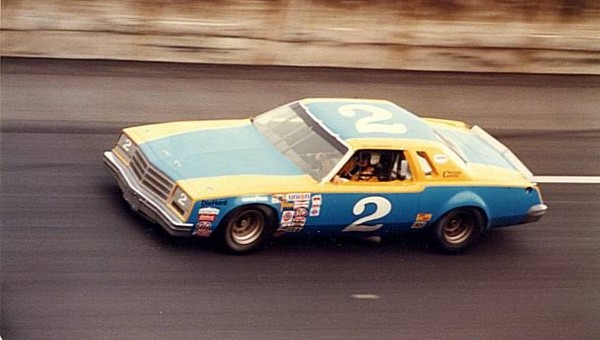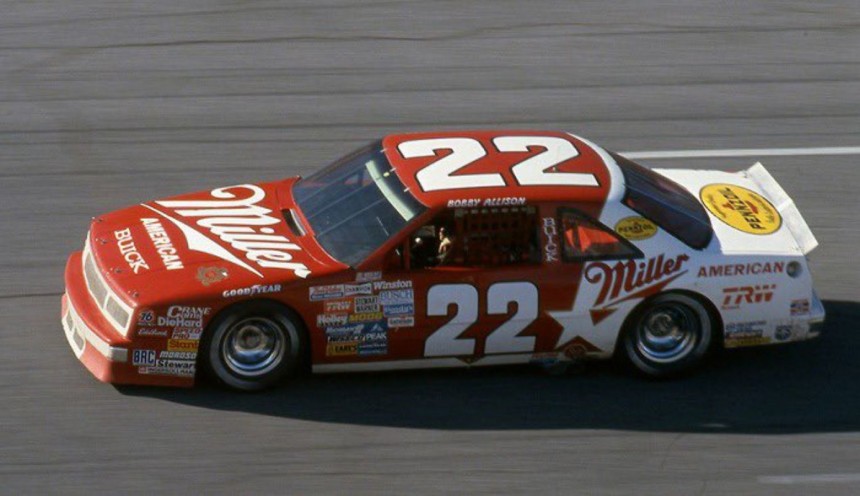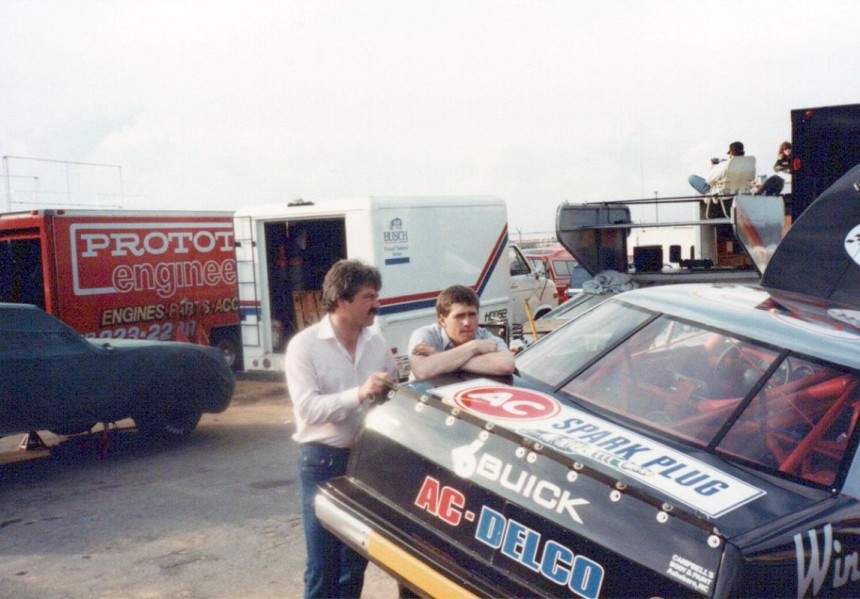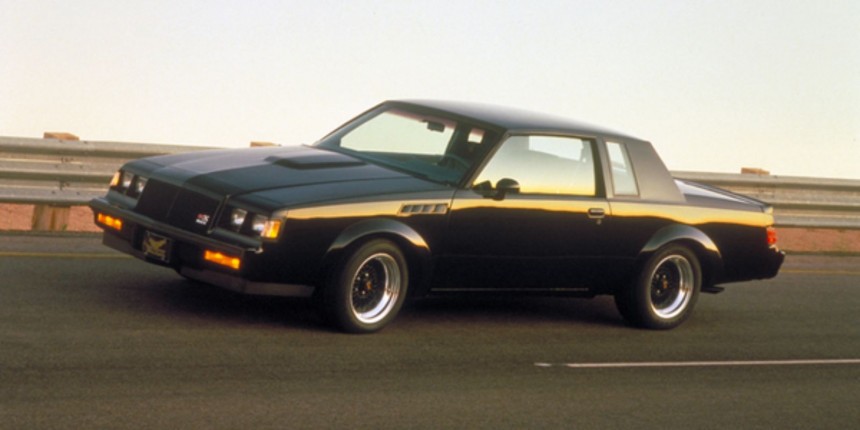Let me give you a challenge. Go out and ask any person what their favorite US automaker is, and I bet you everything that no matter who you ask or how far back in time you go, you will see that nobody cares about GM's (General Motors) most neglected brand. I am talking about Buick.
It is a brand of cars stuck out in no man's land because it's neither a luxury brand nor an economy make, with no timeless classics or modern masterpieces. Buick, it's out there just to..., well, just to exist. People mostly remember Buick as grandma's grocery-getter or something very similar. Basically, they were nice cars that were relatively affordable, but other than that, nothing was exciting about them. Even in marketing campaigns and advertisements on TV, they seemed to accept and resign to their role as the forgettable family wagon. The entire ads focus on people not even recognizing the cars as Buicks.
However, for a brief moment in history, they had their time in the spotlights and immediately vanished right after that. As a result, let's take a look at their life in NASCAR and how they become the most forgettable manufacturer of this competition.
Buick's journey in NASCAR begins with the very first NASCAR Cup Series race held in the summer of 1949 at the old three-quarter mile dirt over Charlotte Speedway (which, by the way, has no relation to the Charlotte Motor Speedway of today). In that race, Curtis Turner and Lee Petty raced in 1946 and 1948 Buick vehicles. Still, only Turner managed to stay out of trouble and finish in the top ten, while Lee Petty crashed out past the halfway point. The manufacturer with the triple shields as a logo would be a constant presence in NASCAR fields from that point forward, although in limited numbers. There wasn't a whole lot of them running around, with most races only having a couple of them being fielded at any given time and even the big tracks with 70 cars racing saw only a few Buicks running around. Even back then, not a whole lot of people paid attention to this brand.
With seasons in the 1950s often consisting of almost 40 races, you may think that Buick surely won something right from the beginning. Well, not really. However, fans had to wait six years to see Buick win its first race. It took 187 races to get the job finally done. Besides, it's worth noting that pretty much every single other manufacturer had won up to this point. Brands like Hudson, Nash, and Studebaker all had victories. Take the legendary Hudson Hornet, for example, who absolutely destroyed the competition in the early 1950s. Besides, they were the first automaker to provide factory support to NASCAR, but all these manufacturers aren't even around to talk about them. By the way, even Jaguar scored a victory before Buick did.
But what about the big three of GM, Ford, and Chrysler? Ford cars and their 'children' Lincolns and Mercurys won tons of races in the early days. At the same time, Chrysler also had victories for all of its brands, like Dodge and Plymouth, and even GM had wins for Chevrolet and Oldsmobile. On the other side, Pontiac hadn't achieved any victories yet, but that was just due to a lack of trying on their part, as they had only made a handful of starts and total up to this point.
Buick tried a lot with all types of drivers over the course of years and on all sorts of different racetracks. After 187 tries, the planets aligned at the Charlotte Speedway, and Buck Baker finally got the job done. Herb Thomas was racing the only other Buick that day but unfortunately crashed out. Considering that Herb Thomas has an absurd win percentage of 21% across his entire career, the fact that he didn't bring his Buick home is quite crazy, to be honest. Still, that is kind of the Buick story. Give them the best driver with the best team around him, and they will still find a way to snatch defeat from the jaws of victory. Speaking of Herb Thomas, he got to make the second victory for the team three months later at the one-mile paved Rowley Speedway. Now Buick had a win on a short dirt track and the other on a big paved superspeedway.
Those 1955 Buick vehicles were extremely fast on all manner of tracks, so naturally, you will think that the third victory is right around the corner. No, they had to wait quite a while. Not one or two years. Not five, not ten, hell, not even 20 years. Win number three came in 1981, nearly three decades later. That is the longest drought between victories of any manufacturer in NASCAR history by a mile. But what happened? Was Buick coming to the tracks only to watch the race without participating in it? No, they were out there with everyone else. During the 1960s and 1970s, there was a lot of Buicks racing. For example, Dale Earnhardt's first Daytona 500 in 1979, where he led for a few laps and finished in P8, was in a Buick Regal. However, everybody believes that he did that in a Monte Carlo model because Buick and the Monte Carlo are so similar. However, the Regal was a reasonably popular make and model with everyone back then. Dale Earnhardt made three starts in a Buick that year en route to his Rookie of the Year title.
During this winless streak, Buick had a lot of models to try and win the championship, but nothing worked for them at all. Nothing was revolutionary or inspiring about them. In comparison, Oldsmobile vehicles at that time redefined what the NASCAR world thought about aerodynamics. Chevrolet cars were out there winning out of sheer tenacity and had a massive following, while Ford had an enormous conglomerate that threw tons of money around. Buick hadn't anything special. They were just out there collecting paychecks.
However, as the 1980s rolled around, a simple rule modification would change everything, and Buick won in that decade three championships, achieving 62 wins and three Daytona 500 victories. In 1981, NASCAR implemented new rules to make the cars look like their showroom counterparts. Besides, the competition officials shortened the wheelbase to make the car look more like the compact models and declared that the manufacturers had to provide the body panels. The outer shell was the same because the racing teams built the rest of the vehicle from zero.
The drivers did not receive those new changes well because the shorter wheelbase made the cars extremely unstable. A lot of manufacturers created some bad aerodynamic vehicles. However, Buick got the perfect recipe for their Regal model, and the main competition for them was Pontiac, who had an even greater car on paper. As a result, everyone believed that Pontiac had the 1981 Daytona 500 in the bag. Still, Richard Petty surprised everyone by taking home his Regal in the first place, winning his seventh Daytona 500 race, a record that still stands today.
Buick wasn't done because they would go on to win the next 47 out of 61 races and the 1981, 1982, and 1983 championships. However, by the time 1984 rolled around, Buick doubled down on the recent NASCAR success and relaunched the Buick Grand National for consumers, which was essentially a showroom Buick Regal with a turbocharged V6 power unit. By the time they ran its final iteration in 1987 under the GNX, they had somehow created one of the fastest production cars in the world, being beaten only by the Lamborghini Countach. Their experience in NASCAR helped them to turn an ordinary family car into something that competed with supercar brands like Porsche, Ferrari, and Lamborghini, but with a much lower price. As a result, the GNX was a hit when it came to sales numbers.
In addition to NASCAR, they started running well in the Trans-Am series and even made a name for themselves in IndyCar with a brilliant strategy. They created some stupid, fast, but wildly unstable engines. At the time, Buick had a lot of buyers because those power units were very cheap. Buying a Buick engine theoretically guaranteed a starting slot, and finishing dead last in the Indy500 paid out way more than the engines were worth. They were so fast that they were setting track records but so unreliable. For example, only two Buicks ever ran the entire 500-mile distance in the Indy event.
In 1988, Buick dropped the LeSabre and switched back to the Regal, which was a significant departure from his street-faring counterpart, but crazy fast. In 1988 and 1989, they achieved only three victories; the last win came in 1990 at North Wilkesboro Speedway. Buick ran one final season in 1991, went winless, and dipped before the 1992 season began.
Buick still stands in the consumer market despite having no presence in motorsport or anywhere else. Surprisingly, they are doing well for themselves and selling about a million new cars a year in China. If you didn't know, almost 80% of their sales come from China, where Buick is seen as a high-end luxury brand, like we see Mercedes in our area. They are talking about a new Grand National model or a comeback in NASCAR, but nothing is sure.
And if it's something we learned from the history of this brand is that nothing is sure with Buick, and they will always surprise us in a good or bad way. Still, their importance and the way they changed NASCAR are incontestable.
However, for a brief moment in history, they had their time in the spotlights and immediately vanished right after that. As a result, let's take a look at their life in NASCAR and how they become the most forgettable manufacturer of this competition.
Buick's journey in NASCAR begins with the very first NASCAR Cup Series race held in the summer of 1949 at the old three-quarter mile dirt over Charlotte Speedway (which, by the way, has no relation to the Charlotte Motor Speedway of today). In that race, Curtis Turner and Lee Petty raced in 1946 and 1948 Buick vehicles. Still, only Turner managed to stay out of trouble and finish in the top ten, while Lee Petty crashed out past the halfway point. The manufacturer with the triple shields as a logo would be a constant presence in NASCAR fields from that point forward, although in limited numbers. There wasn't a whole lot of them running around, with most races only having a couple of them being fielded at any given time and even the big tracks with 70 cars racing saw only a few Buicks running around. Even back then, not a whole lot of people paid attention to this brand.
With seasons in the 1950s often consisting of almost 40 races, you may think that Buick surely won something right from the beginning. Well, not really. However, fans had to wait six years to see Buick win its first race. It took 187 races to get the job finally done. Besides, it's worth noting that pretty much every single other manufacturer had won up to this point. Brands like Hudson, Nash, and Studebaker all had victories. Take the legendary Hudson Hornet, for example, who absolutely destroyed the competition in the early 1950s. Besides, they were the first automaker to provide factory support to NASCAR, but all these manufacturers aren't even around to talk about them. By the way, even Jaguar scored a victory before Buick did.
Buick tried a lot with all types of drivers over the course of years and on all sorts of different racetracks. After 187 tries, the planets aligned at the Charlotte Speedway, and Buck Baker finally got the job done. Herb Thomas was racing the only other Buick that day but unfortunately crashed out. Considering that Herb Thomas has an absurd win percentage of 21% across his entire career, the fact that he didn't bring his Buick home is quite crazy, to be honest. Still, that is kind of the Buick story. Give them the best driver with the best team around him, and they will still find a way to snatch defeat from the jaws of victory. Speaking of Herb Thomas, he got to make the second victory for the team three months later at the one-mile paved Rowley Speedway. Now Buick had a win on a short dirt track and the other on a big paved superspeedway.
Those 1955 Buick vehicles were extremely fast on all manner of tracks, so naturally, you will think that the third victory is right around the corner. No, they had to wait quite a while. Not one or two years. Not five, not ten, hell, not even 20 years. Win number three came in 1981, nearly three decades later. That is the longest drought between victories of any manufacturer in NASCAR history by a mile. But what happened? Was Buick coming to the tracks only to watch the race without participating in it? No, they were out there with everyone else. During the 1960s and 1970s, there was a lot of Buicks racing. For example, Dale Earnhardt's first Daytona 500 in 1979, where he led for a few laps and finished in P8, was in a Buick Regal. However, everybody believes that he did that in a Monte Carlo model because Buick and the Monte Carlo are so similar. However, the Regal was a reasonably popular make and model with everyone back then. Dale Earnhardt made three starts in a Buick that year en route to his Rookie of the Year title.
During this winless streak, Buick had a lot of models to try and win the championship, but nothing worked for them at all. Nothing was revolutionary or inspiring about them. In comparison, Oldsmobile vehicles at that time redefined what the NASCAR world thought about aerodynamics. Chevrolet cars were out there winning out of sheer tenacity and had a massive following, while Ford had an enormous conglomerate that threw tons of money around. Buick hadn't anything special. They were just out there collecting paychecks.
The drivers did not receive those new changes well because the shorter wheelbase made the cars extremely unstable. A lot of manufacturers created some bad aerodynamic vehicles. However, Buick got the perfect recipe for their Regal model, and the main competition for them was Pontiac, who had an even greater car on paper. As a result, everyone believed that Pontiac had the 1981 Daytona 500 in the bag. Still, Richard Petty surprised everyone by taking home his Regal in the first place, winning his seventh Daytona 500 race, a record that still stands today.
Buick wasn't done because they would go on to win the next 47 out of 61 races and the 1981, 1982, and 1983 championships. However, by the time 1984 rolled around, Buick doubled down on the recent NASCAR success and relaunched the Buick Grand National for consumers, which was essentially a showroom Buick Regal with a turbocharged V6 power unit. By the time they ran its final iteration in 1987 under the GNX, they had somehow created one of the fastest production cars in the world, being beaten only by the Lamborghini Countach. Their experience in NASCAR helped them to turn an ordinary family car into something that competed with supercar brands like Porsche, Ferrari, and Lamborghini, but with a much lower price. As a result, the GNX was a hit when it came to sales numbers.
In addition to NASCAR, they started running well in the Trans-Am series and even made a name for themselves in IndyCar with a brilliant strategy. They created some stupid, fast, but wildly unstable engines. At the time, Buick had a lot of buyers because those power units were very cheap. Buying a Buick engine theoretically guaranteed a starting slot, and finishing dead last in the Indy500 paid out way more than the engines were worth. They were so fast that they were setting track records but so unreliable. For example, only two Buicks ever ran the entire 500-mile distance in the Indy event.
Buick still stands in the consumer market despite having no presence in motorsport or anywhere else. Surprisingly, they are doing well for themselves and selling about a million new cars a year in China. If you didn't know, almost 80% of their sales come from China, where Buick is seen as a high-end luxury brand, like we see Mercedes in our area. They are talking about a new Grand National model or a comeback in NASCAR, but nothing is sure.
And if it's something we learned from the history of this brand is that nothing is sure with Buick, and they will always surprise us in a good or bad way. Still, their importance and the way they changed NASCAR are incontestable.



















